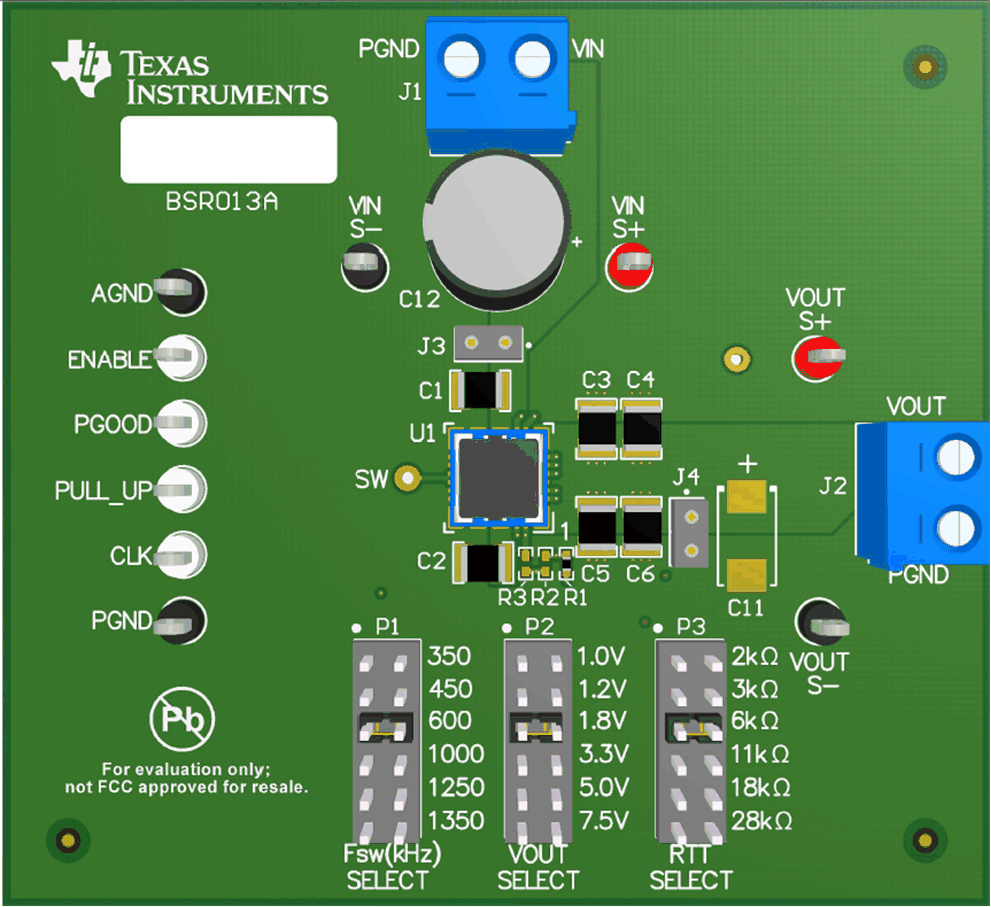SNVU581B November 2017 – June 2021 TPSM84424 , TPSM84624 , TPSM84824
2 Getting Started
Figure 2-1 highlights the user interface items associated with the EVM. The VIN Power terminal block (J1) is used for connection to the host input supply and the VOUT Power terminal block (J2) is used for connection to the load. These terminal blocks can accept up to 16-AWG wire.
 Figure 2-1 EVM User Interface
Figure 2-1 EVM User InterfaceThe S+ and S- test points for both VIN and VOUT, located near the power terminal blocks are intended to be used as voltage monitoring points where voltmeters can be connected to measure VIN and VOUT. Do not use these S+ and S- monitoring test points as the input supply or output load connection points. The PCB traces connecting to these test points are not designed to support high currents.
The VIN Scope (J3) and VOUT Scope (J4) test points can be used to monitor VIN and VOUT waveforms with an oscilloscope. These test points are intended for use with un-hooded scope probes outfitted with a low-inductance ground lead (ground spring) mounted to the scope probe barrel. The two sockets of each test point are on 0.1 inch centers. The scope probe tip should be inserted into the socket marked with a white dot, and the scope ground lead should be inserted into the other socket.
The control test points located to the left of the device are made available to test the features of the device. The UVLO feature can be adjusted by changing resistors R24 and R25 on the bottom of the board. An external voltage can be applied to the PULL_UP test point for the PGOOD signal. Refer to the Test Points Descriptions section of this guide for more information on the individual control test points.
The Fsw SELECT jumper (P1), the VOUT SELECT jumper (P2) and the RTT SELECT jumper (P3) are provided for selecting the desired output voltage, the appropriate switching frequency and the appropriate TurboTrans resistor value. Before applying power to the EVM, ensure that the jumpers are present and properly positioned for the intended output voltage, switching frequency, and TurboTrans resistor value. Refer to Table 2-1 for the recommended jumper settings. Always remove input power before changing the jumper settings.
| VOUT Select | Fsw Select | RTT Select |
|---|---|---|
| 1 V | 350 kHz | 2 kΩ |
| 1.2 V | 450 kHz | 3 kΩ |
| 1.8 V | 600 kHz | 6 kΩ |
| 3.3 V | 1000 kHz | 11 kΩ |
| 5 V | 1250 kHz | 18 kΩ |
| 7.5 V | 1350 kHz | 28 kΩ |